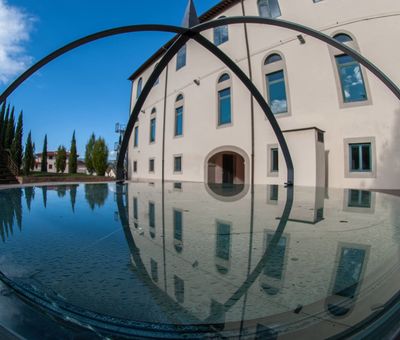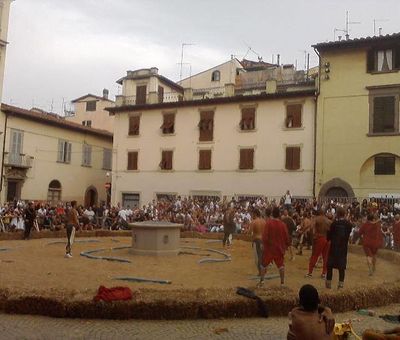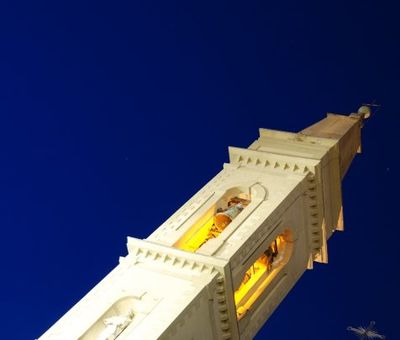In the middle of the triangle
Often, when speaking of Montevarchi, it’s said that it’s in the golden triangle among Arezzo, Siena and Florence. And we all know that being amid such beauty, history and importance can be both a curse and a blessing.
It’s a curse because Montevarchi has never felt like it belonged to any of these three bigger cities, coupling up instead over time with the one it felt most seduced by, or the one which seemed most convenient; but it’s a blessing because its very position has been strategic throughout its history.
It’s a history which has its roots in the
first half of the Middle Ages, where on the Ginestra hill (a nickname deriving
from the plants surrounding it) the “spedale di San Michele Arcangelo” could be
found, managed by the Benedictines to help pilgrims and wanderers who had
stopped by on their way to Luoghi Santi. On the other hill, today called “dei
Cappuccini”, given the convent where the Franciscans lived in the 16th
century, the “castellare” had pride of place, also known as Castrum
Montisguarchi or Monteguarco (which will later become today’s Montevarchi),
most probably designed this way as this town signed a “varco” (passage) of sorts
between Florentine territory and Arezzo territory.
The Madonna’s blessed milk
Straddling different areas, amongst Guelphs and Ghibellines, without ever finding an identity if not that of Montevarchi itself: to counteract this and to be unique, we’ve given ourselves a past that perhaps has never existed but that nonetheless makes us feel special. It’s here that one of the most mysterious and revered medieval remains can be found, the Madonna’s blessed milk.
Be it myth or history, this relic has given birth to a breathtaking work of art: the Tempietto Robbiano, one of the rare examples that unites architecture and glazed terracotta from Andrea and Luca Della Robbia’s workshop. To this day, still linked to the Blessed Milk, historical re-enactments inject the town roads with new energy. The Gioco del Pozzo takes place during the Feste del Perdono, which apparently came out of the need to decide who had more of a priority, out of the 4 parts of the old town, in getting water from the town’s well in the hottest and driest months. Once again, this was a mixed blessing, since Montevarchi’s residents themselves were willing to whittle away their access to a primary need with just a game.
A charming town, or barely relevant?
So, a mixed blessing, we called it. But this isn’t just due to Montevarchi's position amongst great Tuscan cities: it's also linked to its strong sense of competition with other Valdarno cities, especially San Giovanni Valdarno. And thus comes with it a competition focused on who has given birth to more famous individuals, who has the liveliest old town, who has the sparkliest and most beautiful fireworks. In eternal conflict, without ever admitting that others have done better or far more, even when the evidence is clear to all. It was to be expected, though, from a city that having been in the centre of the aforementioned triangle chose to adopt the word “citto” rather than “bambino” as they do in Siena, that is baffled in hearing “Alò” to those hailing from Arezzo, and boasts about having Florence’s same telephone number prefix.







